| Avengers Endgame & Avatar |
Continuing its historic run, Marvel's "Black Panther" cracked into the top ten of the highest-grossing movies of all time at the worldwide box office this week.
With several weeks left in global theaters, "Black Panther" could still make a run at surpassing fellow Disney properties from the "Star Wars" and "Avengers" series.
But it's unlikely to make it into the top rung of blockbusters from years ago.
For this list, we turned to Box Office Mojo for its all-time data on worldwide box office grosses.
The Top 20 Highest-Grossing Movies of All Time Worldwide
What are the highest-grossing movies of all time? It might surprise you that four of the 20 highest-grossing movies of all time came out last year, and we’ve already added another two in 2019——Avengers: Endgame now tops the worldwide box office list and the “don’t call it a live-action” remake of The Lion King has cracked the Top 10. Those stats, of course, are skewed by rising ticket prices and increases in population. Adjusted for inflation, no movie can match the $3.7 billion haul that Gone with the Wind’s $390 million box-office receipts since its 1939 release would be worth in today’s dollars. But here, we’re looking at the highest-grossing movies ever in gross dollar receipts.
Except for Titanic and two Disney films, all of the biggest box office movies are part of a franchise, making us believe that there were probably some studio execs at Paramount or 20th Century Fox trying to convince James Cameron that he should do a sequel (“Are we sure that Jack really dies? Can he come back as a ghost?”). Speaking of Cameron, directing what at one point were the two biggest box-office hits of all time is quite a feat, one we’re sure hasn’t gone to his head. That they were so different—an historic romance drama and a sci-fi action/adventure—makes it all the more impressive. And all credit to what the Russo Brothers have accomplished with the Marvel properties they were handed.
The list of the highest-grossing films of all time includes some highly enjoyable movies and some that we can only shake our heads at and marvel at the worldwide moviegoer.
Here are the 20 highest-grossing movies of all-time:
20. Minions (2015)
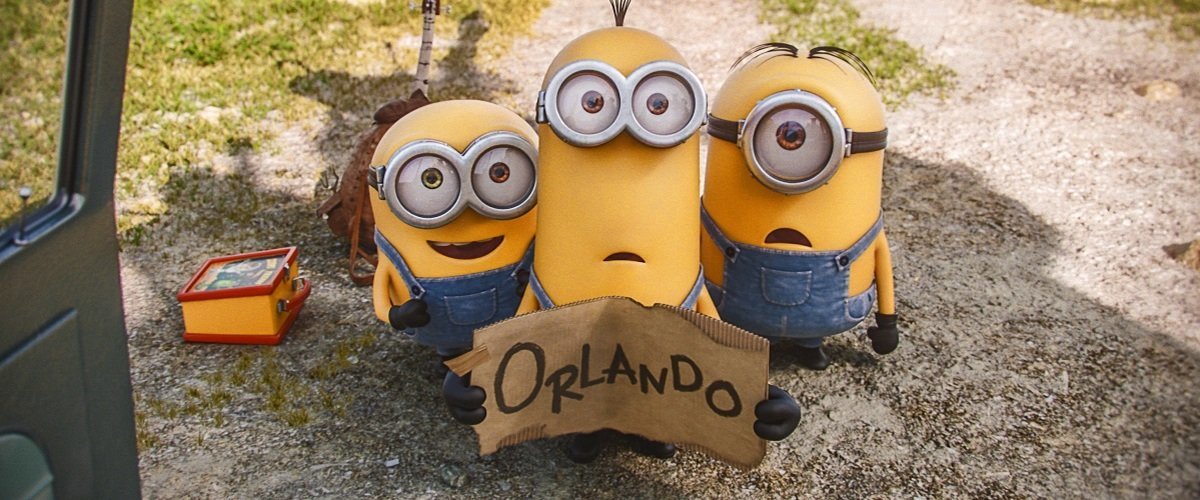 |
| A minions movie review & film summary (2015) | Roger Ebert |
Box office: $1.16 billion
Directors: Kyle Balda, Pierre Coffin
Struggling to come up with a reason for its sidekick characters to have their own adventure, Minions proves far too much of a little thing. After two outings as the henchmen to evil super-villain Gru (Steve Carell) in the Despicable Me franchise, the short, stubby, giant-eyed, yellow-bodied Minions are given a backstory of a distinctly dreary nature in directors Kyle Balda and Pierre Coffin’s rambunctious film. Their origins, as it turns out, are as dull as their escapades are wearisome, in large part because the Minions are, by design, one-joke characters incapable of supporting the thousands of gags, pratfalls, one-liners, and other assorted absurdities that crowd the screen for the proceedings’ 90 minutes. Try as they might, they can’t compensate for the lameness of this prequel’s countless pranks, nor for the almost immediate impression that they’re small fries ill-suited for a stand-alone solo effort. What Minions surely doesn’t lack is energy. Set to the good-natured narration of Geoffrey Rush, Universal’s animated film opens with a credits sequence that explicates how, since the dawn of time, the Minions have functioned as gleeful second bananas, hitching their rides to the fortunes of the fiercest bad guy around. That genetic imperative meant they rode side by side with the T. rex and stood shoulder-to-shoulder with Napoleon (among others), and in each instance, their buffoonery was ultimately the cause of their master’s demise. Theirs is a nomadic life of constant job-hunting, though after their falling out with the aforementioned French emperor, they find themselves adrift, living a boss-less life in a snowy mountain cave. Unwilling to allow his fellow yellow guys to waste away due to a lack of purpose, intrepid Minion Kevin sets out—with the assistance of enthusiastic but idiotic Bob and sarcastic cyclops Stuart—to find the clan a new employer. A kids’ film needs not to strive for profundity à la Inside Out; making audiences laugh is reason enough to exist. But Minions winds up residing in a passable-at-best middle ground that’s already overpopulated by scores of virtually identical diversions. ...And yet, it made a billion dollars. —Nick Schager
19. Iron Man 3 (2013)
Box office: $1.21 billion
Director: Shane Black
Though its titular hero spends 2/3rds of the film outside his armor, Iron Man 3 works. The film provides just the right mix of action (much of it explosive), chuckles (mostly via banter) and plot (fairly comprehensible). Some of that credit goes to director Shane Black, no stranger to the action genre as a screenwriter (Lethal Weapon, The Last Action Hero), nor to Robert Downey Jr. as a director (Kiss Kiss Bang Bang). At a time when Whedon’s Avengers still loomed large in the rearview mirror (and provided much of the impetus for Tony Stark’s personal character arc in Iron Man 3), Black keeps the plot and pacing under much firmer control than Jon Favreau did in Iron Man 2. But though Iron Man 3 is a better-constructed film than its predecessor, ultimately it succeeds for the same reason the first two films did—Robert Downey Jr. is Tony Stark. Whereas most actors, no matter how adept the performance, play second fiddle to the character they portray, Downey Jr. has pretty much displaced Tony Stark, 50 years of comic book character development notwithstanding. In part, it’s because the character himself has never been as compelling as the armor he wore, but mainly, it’s because Downey Jr.’s Tony Stark is just so damned much more enjoyable to be around than Stark Classic. It doesn’t matter that, in terms of hero profiles, Downey Jr.’s breezy, edgy quipping is pure Spider-Man. In fact, it’s telling that, in a realm pretty much defined by a fandom that will wail and gnash teeth about even the slightest deviation from canon, no one really cared. It’s the primary reason why a superhero film where the protagonist spends most of his time out of his armor rather than in it is not just bearable, but downright fun. It’s why the neutering of an arch-villain—though still a troublesome precedent for the Marvel film universe as a whole—works fine within the framework of the film. It’s why, in the frivolous debates of the future, the question “Who was the best Iron Man?” will really be, “Who has done the best version of Robert Downey Jr.?” —Micheal Burgin
18. The Fate of the Furious (2017)

Box office: $1.24 billionDirector: F. Gary Gray
The Fate of the Furious is the main reason moving pictures exist: the glory of dynamic motion which involves the pulse and the heart. The Fast franchise is a group of action films centered around a crew of talented outlaws who engage in illegal street racing and, later, heists. Although the lineup has changed over the years, the basic formula has stayed the same: an eccentric crew of colorful characters with various talents, led by Dominic Toretto (Vin Diesel) and his co-conspirator/girlfriend/wife Letty Ortiz (Michelle Rodriguez) get involved in ever-increasing stakes. This group refers to themselves as “family,” and their bond is the sinew of the franchise. As the series escalates—escalation is the name of the game here—everybody eventually becomes part of the family, even the antagonists who are sent after them: the first movie saw undercover cop Brian O’Conner (Paul Walker) joining the crew; this habit is followed in later movies by Diplomatic Security Service agent Luke Hobbs (Dwayne Johnson). None of this dry summation can give you an accurate idea of a franchise or its charm… which is that it is absolutely bazonkers: These are movies where topping the previous installment is itself the art. How much crazier can the stunts get? How strong is the family’s bond? How many incredible moments will these stars have on the screen? How intense can the stakes get? How byzantine are the plots? How can they possibly pull it off? Any other movie franchise would have run out of gas—think of Brosnan-era Bond. But Fate of the Furious is so clever, so perfectly executed, emotionally sincere, self-aware and gloriously cinematic that I think it made me happier, and more entertained than any other movie I saw in 2017. —Jason Rhode
17. Incredibles 2 (2018)

Box office: $1.24 billion
Director: Brad Bird
Incredibles 2 starts right where the first film ended, with the costumed Family Parr reacting to the arrival of the Underminer (John Ratzenberger). Their scuffle with the villain gains the attention of Winston Deavor (Bob Odenkirk)—or more precisely, allows Deavor and his sister, Evelyn (Catherine Keener), to gain the attention of the Parrs. The siblings want to bring supers back into the light, using Winston’s salesmanship and Evelyn’s tech to sway public opinion back to the pro-super side. To do so, they want to enlist Elastigirl (Holly Hunter) as the tip of the spear in their charm offensive, leaving Mr. Incredible (Craig T. Nelson) on the sidelines for now. (She tends to fight crime in a manner that results in less property damage than her husband, after all.) This sets up a second act that’s firmly by the numbers in terms of story development—watch the husband try to succeed as a stay-at-home dad!—yet no less enjoyable. Bob’s attempts to handle teen romance, Jack-Jack’s manifestation of powers and, the horror of horrors, “new” math will strike a chord with any mom or dad who has ever felt overwhelmed by the simple, devastating challenges of parenthood. (The family interactions, one strength among many with the first film, remain a delight in the sequel.) Meanwhile, we get to watch Elastigirl in action, as she encounters, foils and matches wits with the film’s mysterious villain, Screenslaver. As in the first film, watching Helen Parr do the hero thing is also quite the delight—she’s resourceful, tough and, above all, a professional. Watching Elastigirl operate almost makes one feel sorry for the criminals. Delving more into the plot would do the film a disservice—suffice to say both villainous and family challenges are faced, and it takes a village, Frozone (Samuel L. Jackson) and Edna Mode (Bird) to emerge victoriously. Whether you enjoy Incredibles 2 as much as the original will likely depend on your opinion of the latter, but regardless, you’ll be happy both exist. And in today’s sequel-saturated environment, that is practically a superheroic achievement in itself. —Michael Burgin
16. Beauty and the Beast (2017)
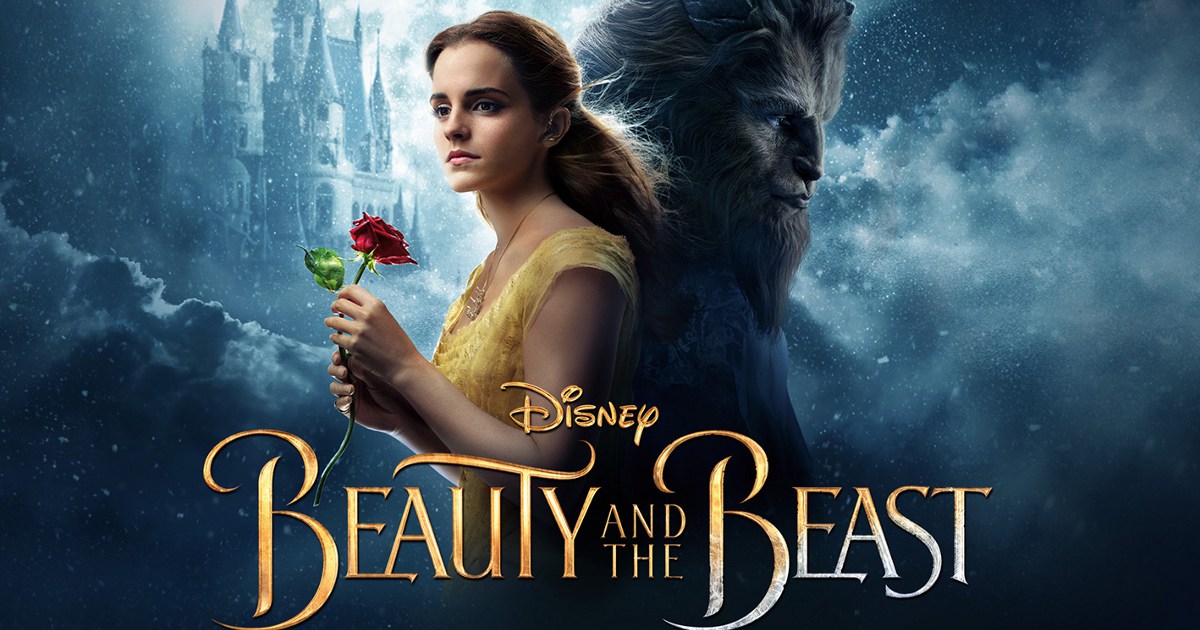
Box office: $1.26 billion
Director: Bill Condon
While a generation of kids gapes at overwhelming CGI landscapes and a talking teacup, the generation before them wonders where all the magic went. An ostensibly live-action remake of the 1991 Disney animated classic, Beauty and the Beast hits all the notes of the original film slowly and without distinction. The new components of this version are great, but they’re jammed into an older model, one we’ve seen before, which can’t always use them to the best of their abilities. The introductory number “Belle (Little Town)” perfectly contrasts the sweeping introduction from Disney’s castle by looking and sounding like it came from a well-choreographed TV musical special. And yes, here that’s a plus. Cramming the screen with gesticulating townsfolk vying for their moment in the French sun makes a strong case for the song’s premise of a town both too small and too full. Then the plot picks up: Belle’s father and the town tinkerer, Maurice (Kevin Kline), is going to the market and will be back with a rose. Maurice serves as our protagonist for almost the first half-hour of the movie, accidentally wandering into Beast’s castle, discovering its magic and anthropomorphic accouterments, failing to escape, coping with his daughter’s sacrifice—offering herself as a prisoner in place of her dad—and eventually running back to town. He wrings every drop of acting juice from his part, giving us an overprotective, loving, encouraging father whose helplessness against a town that doesn’t believe his story is genuinely moving. As the Beast, Dan Stevens gives an engaging performance, manipulating his elastic face and wild eyes into winks, smirks and terribly cold glowering gazes that, when the Beast is the only character on screen, work as well as some of the best CGI creature animation we’ve enjoyed on screen lately. Likewise, Emma Watson nails the role of Belle: smirking at times, lovelorn at others. She’s the kind of adorably naive, romantic dreamer that can still sell a little uppityness (“little town filled with little people”? Belle, this is why the townsfolk dislike you) that makes for a good coming-of-age heroine. Despite some convoluted final action (not Twilight helmer Bill Condon’s directorial strong suit) and unbalanced music, Beauty and the Beast’s teary fairy tale ending survives it all thanks to the brief but colorful relationships we develop with the side characters. Even if they’re not the best they’ve ever been, the story’s quirks and core remain effective. There’s still beauty here to be found. —Jacob Oller
15. Frozen (2013)

Box office: $1.29 billion
Directors: Jennifer Lee, Chris Buck
Everything old is new again in Hollywood these days, so it only made sense for Disney to revive the animated musical brand that dominated the early ’90s. The canny nostalgia play of Frozen catered not just to kids but also to the parents who grew up quoting dialogue and humming tunes from Beauty and the Beast, The Little Mermaid, The Lion King, and Aladdin. Very loosely based on Hans Christian Andersen’s classic story The Snow Queen, Frozen stacks the deck with big bold songs, scheming villains, wacky sidekicks, cuddly characters (ready-made to become holiday merchandise) and not just one but two (!) new Disney princesses. Elsa, the elder of the two, was born with the ability to conjure snow and ice with her bare hands. That means the sisters can skate, sled or build a snowman whenever they please, much to young Anna’s delight. Unfortunately, Elsa’s incredible gift soon feels more like a curse when an ice-related accident leaves Anna injured and their parents forbid Elsa from using her magic. A terrified Elsa locks herself away in her bedroom, essentially abandoning Anna whose memory of the event has been erased by a kindly troll king (Ciaran Hinds). Not that Anna (voiced by Kristen Bell) is willing to give up on her sister so easily. She’s delighted when Elsa (Idina Menzel) comes of age and ascends to the throne, but trouble arises again when Elsa’s powers go public during an argument over Anna’s love-at-first-sight infatuation with charming visiting prince Hans (Santino Fontana). Elsa stuns her assembled subjects with angry bursts of ice and snow, fleeing to the mountains and literally freezing over her entire seaside Scandinavian village in the middle of summer. Local dignitary the Duke of Weselton (Alan Tudyk) proclaims Elsa a monster, but Anna knows better and resolves to track down her sister and bring her back to the kingdom. —Geoff Berkshire
14. Jurassic World: Fallen Kingdom (2018)

Box office: $1.31 billion
Director: J.A. Bayona
Jurassic World: the Fallen Kingdom isn’t the best or worst film in the franchise, but it’s certainly the most dully competent. Twenty-five years after Steven Spielberg ruled the summer with his vision of an island overrun by the most magnificent, terrifying dinosaurs you’ve ever seen, director J.A. Bayona provides us with just one more perfectly below-average blockbuster that occasionally grasps what’s so primal and wondrous about the subject matter. The film deals with the fallout from 2015’s Jurassic World, which ended with the dino-centric amusement park imploding and most of the mighty creatures being killed. But three years later, scientists discover that an active volcano on the island is going to kill off the last of the dinosaurs, a fact that troubles Claire (Bryce Dallas Howard), who has become a fierce advocate for preserving their various species. Now regretting her role in running a park that profited off these mammoth reptiles, she enlists former love Owen (Chris Pratt) to help rescue the beasts. Jeff Goldblum makes a cameo as the offbeat scientist Ian Malcolm—his job is to give congressional testimony that, very handily, highlights the trilogy’s underlying themes in ominous tones. There’s meant to be some dark moral complexity in these films’ depiction of humanity’s desire to create its own dinosaurs—we’re playing God!—but like so much of this silly, by-the-numbers tentpole, the intellectual handwringing is really an excuse for self-perpetuation. The evil masterminds behind the creatures’ abduction just want to make a buck, and so does everybody responsible for Jurassic World: Fallen Kingdom. Such financial expediency isn’t going to go extinct anytime soon. —Tim Grierson
13. Star Wars: The Last Jedi (2017)
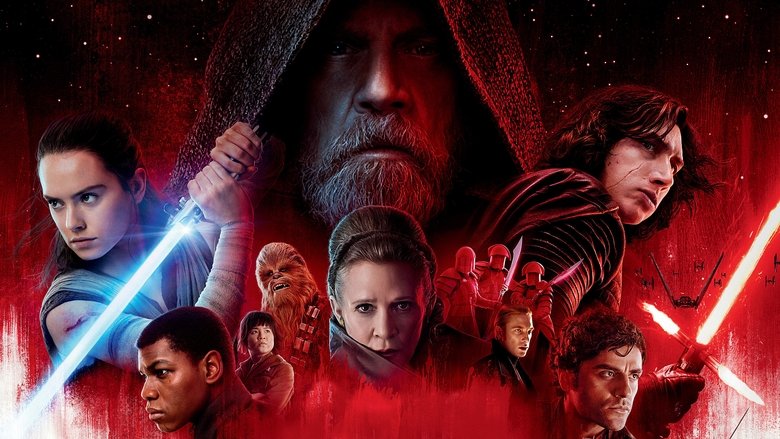
Box office: $1.33 billion
Director: Rian Johnson
The Last Jedi, unlike its predecessor, has the freedom to be daring, and perhaps the most thrilling thing about it—and there are many, many thrilling things—is how abundantly it takes advantage of that freedom. If The Force Awakens was basically just Star Wars told again in a new, but familiar way, The Last Jedi challenges the audience, challenges the Star Wars mythos, even challenges the whole damned series itself. It blows the universe up to rebuild it; it is a continuation and a new beginning. And more than anything else, it goes places no Star Wars film has ever dreamed of going. In a way, the success J.J. Abrams had with The Force Awakens, particularly how decidedly fan-servicey it was, laid the groundwork for what The Last Jedi can pull off. That movie reminded you how much power and primal force this series still had. This movie is an even more impressive magic trick: It uses that power and force to connect you to something larger. Not everything in The Last Jedi works perfectly, but even its few missteps are all founded in the desire for something new, to take risks, to push an American myth into uncomfortable new directions. —Will Leitch
12. Harry Potter and the Deathly Hallows: Part 2 (2011)
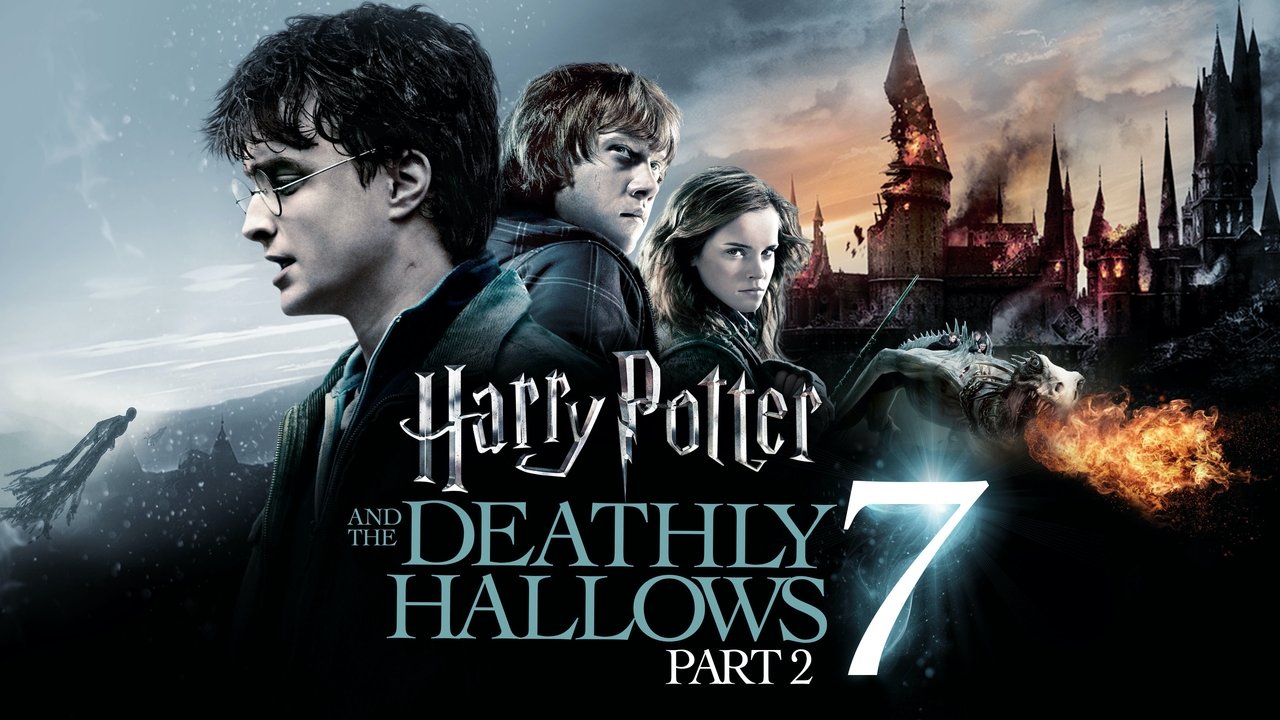
Box office: $1.34 billion
Director: David Yates
It all ends. And to be sure, it was a fitting end for the storied franchise. Perhaps no other series of children’s films (and few series of films period) has delivered as consistently good visuals and narrative as Harry Potter. The event that was Harry Potter and the Deathly Hallows: Part 2 can be called nothing less than epic. Picking up right where Part 1 left off, Harry grieves by the seaside grave of the fallen Dobby. His gravestone reads “A Free Elf.” The death of Dobby left moviegoers, even those schooled on and prepared by the source material, gutted. It’s one thing to absorb the pathos from the words on the written page, but the movie medium can pack a harder punch. Of course, without a reverent retelling of the story crafted by the novel’s author, the words become hollow on the screen. And for eight films, the Potter franchise has tried on four directors and two writers, finding success and failure through numerous evolutions. All the while, the three central actors—Daniel Radcliffe, Emma Watson, and Rupert Grint—grew up along with hordes of avid fans. The story depends so much on caring for Harry. Played with timidity by the ever-boyish Radcliffe, we first met Harry as he made his bed under the stairs in the unwelcoming home of a relative. Cast out because he was different, the bespectacled Harry won us over with each installment in the series, managing, often awkwardly, to combat the forces of Voldemort with pure goodness. But as students of the books know, Harry’s innocence is but part of his defense. And the grand plan, politics, and treachery, play out in Part 2 in a clever and challenging manner. What started out in 2001 as a kid’s fantasy matured into something of surprising import and lasting impact. —Jonathan Hickman
11. Black Panther (2018)

Box office: $1.35 billion
Director: Ryan Coogler
Black Panther might be the first MCU film that could claim to most clearly be an expression of a particular director’s voice. We shouldn’t go so far as to call it auteurist, because it’s still a Disney movie and (perhaps ironically) a part of that monopolizing Empire—i.e., eat the rich—but Black Panther’s action scenes, especially, feel one with Coogler’s oeuvre. Look only to an early scene in a South Korean casino, in which T’Challa (Chadwick Boseman), Okoye (Danai Gurire) and Nakia (Lupita Nyong’o) plan to intercept a deal between Klaue and everyone’s favorite CIA milquetoast, Everett Ross (Martin Freeman, lovable) for a vibranium-filled artifact which Klaue stole from some colonizer-run museum with Killmonger’s help. We’re introduced to Klaue through the surprising spryness of his violence—Andy Serkis, too, freed from mocap, is still an amazing presence, even as a gangster shitbag—and Coogler gets on his wavelength, carving out the geography of the casino in long tracking shots, much like he convinced us to love stained, shitty-seeming Philadelphia gyms in Creed by helping us to comprehend the many crevices and corners of each hole in the wall. When the casino brawl breaks out into the streets, morphing into a death-defying car chase (slow motion thankfully kept to a minimum), we feel as if we know exactly what these characters—and this wonderful director—are capable of. Cue magnificent Vince Staples track. —Dom Sinacola
10. Avengers: Age of Ultron (2015)
![Avengers: Age of Ultron | film by Whedon [2015] | Britannica](https://cdn.britannica.com/60/182360-050-CD8878D6/Avengers-Age-of-Ultron-Joss-Whedon.jpg)
Box office: $1.41 billion
Director: Joss Whedon
The second Avengers film was warmly received when it initially arrived, but then suffered a bit of immediate blowback, with many superhero genre geeks asserting themselves that although it was undeniably an entertaining film, it represented something of a step back from Joss Whedon’s record-smashing original. Even if it can’t quite match it, and occasionally feels like a bridge toward the next Avengers story, there’s still a whole lot to enjoy in this action-packed yarn. James Spader excels as the voice of the godlike Ultron—a wonderfully arrogant, immature AI character who is only undermined by plot, rather than performance. Ultimately, though, we may remember the Age of Ultron more for the storyline fallout it helped generate in the MCU, as Tony Stark’s guilt at creating Ultron is instrumental in driving his position in the fabulous Civil War. Looking back on it in the wake of several other MCU films, its stature has somewhat grown as a result of what it has helped build. —Jim Vorel
9. Furious 7 (2015)
Box office: $1.52 billion
Director: James Wan
Watching the seventh installment of the adrenaline-fueled Fast & Furious franchise, one gets the distinct impression that, when faced with a creative choice, the filmmakers asked themselves, “What’s the most insane, over-the-top thing we can do here?” Then they did just that. For a series of films that has been a continual escalation in physics-defying stunts, Furious 7 takes it to an entirely new level. The result is a damn lot of fun. Furious 7 is a part revenge thriller, part daring heist, and more than a little of a loving goodbye to a dear friend. Franchise star Paul Walker died in a car crash before filming was complete, and both his life and death loom large over the movie. Like his character, Brian O’Conner experiences one harrowing escapade after another, you wait for the moment where he meets his end. It feels inevitable and waiting around every corner. There are more than a few instances where Walker’s face is digitally pasted on another body—his brothers stood in for him to help finish the production. The movie is also a celebration of his life. There’s much talk about family in the Furious films; the gang’s been picking up strays and bringing them into the fold since day one. The chemistry between the cast is undeniable, and it’s easy to see how much everyone involved enjoys themselves. Furious 7 traffics so heavily in history that it will carry the most weight with already extant fans, especially in an emotional sense. That said, there are enough WTF action moments and eye candy to sell the movie to more than just diehards. —Brent McKnight
8. The Avengers (2012)

Box office: $1.52 billion
Director: Joss Whedon
Nestled amongst the gaudy box office numbers of Joss Whedon’s blockbuster is a much simpler achievement. Yes, The Avengers should evoke a deserved appreciation of Whedon’s directorial skills. And yes, the film’s release and reception make for a natural “And that’s when it was official” moment that the MCU took over Hollywood. But for comic book fans especially, The Avengers represents the first instance of the superhero team dynamic truly captured and sustained on film. Even though the X-Men and the Fantastic Four had received big-screen treatment, those films were all still pretty static. The interaction between both heroes and villains was slow, separate vignettes rather than two-way, three-way or more-way battles. If Raimi’s Spider-Man showed why comic book superheroes are fun, The Avengers showed why superhero teams are. —Michael Burgin
7. The Lion King (2019)
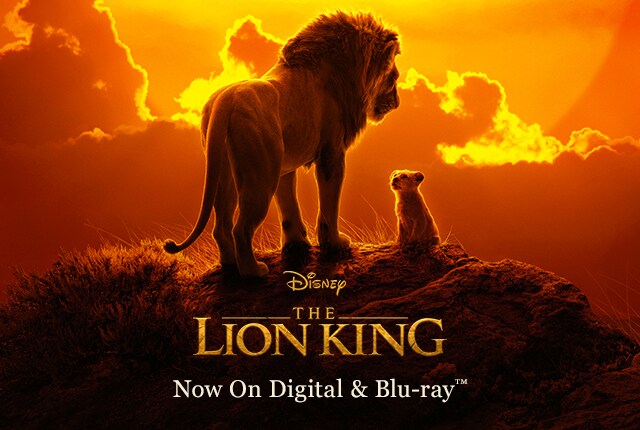
Box Office: $1.60 billion
Director: Jon Favreau
The Lion King feels less like a more “realistic” version of the classic animated original than a bloodless X-ray of it. The new Disney trend of making “live-action” versions of their animated catalog—“live-action,” of course, being the exact wrong term for what this is—can have a purpose besides the obvious profitability of reviving an existing brand name if its goal is to conjure the spirit of the original rather than artificially reinflate its corpse; David Lowery’s Pete’s Dragon wasn’t perfect, but it felt like a fond cover rather than, well, taxidermy. That’s what the new Lion King feels like: It feels like taxidermy. It feels like computers attempting to impersonate real-life and doing so with such rigid, determined accuracy that the result feels both emotionless and even a little ghoulish. What exactly are these creatures? The movie is dutifully mounted, and Favreau brings the same dogged professionalism he brought to The Jungle Book, a film with many of the same problems as this film. It does its job all too well. The problem is that The Lion King is The Lion King, you know? This is a universally powerful story, with terrific songs and countless funny and fascinating supporting characters. It’s a classic of performance and sensation. This version, seemingly by design—like that was the damned plan all along—drains every bit of life from it … to make it more “realistic.” I would love to watch a documentary about these beautiful animals in the flesh. I would love to watch the original film with its joy and grandeur and scope and sense of fun. This? This bizarre, literal-minded thing? I don’t know what this is. —Will Leitch
6. Jurassic World (2015)

Box office: $1.67 billion
Director: Colin Trevorrow
Jurassic World marks the fourth entry in its paleontological franchise, but it’s probably more important as the second chapter in the story of Chris Pratt’s unexpected ascent to movie stardom. Pratt, seemingly born to make a career out of playing lovable doofuses, made his goofy tenor work for him in Guardians of the Galaxy. With Jurassic World, he’s shed that skin almost entirely in favor of aping the hard-jawed macho men of the 1950s B-movie canon. That transformation lends the film inevitability: As if brand recognition didn’t give Jurassic World enough of a box-office edge, the image of Pratt riding a motorcycle side by side a quartet of raptors should sell Colin Trevorrow’s picture to the crowds. That scene, and others like it, let Jurassic World function as a suitably thrilling roller-coaster ride. Unsurprisingly, they don’t add up to a particularly good movie, but Trevorrow has enough diversions stored up his sleeve that the film’s inconsistencies and overarching sloppiness almost don’t matter. Here, we finally get to see John Hammond’s loopy vision of a dino theme park brought to fruition. —Andy Crump
5. Avengers: Infinity War (2018)

Box office: $2.05 billion
Directors: Anthony Russo, Joe Russo
Avengers: Infinity War is epic in a way that has been often aspired to but never fully grasped when it comes to the translation from comic book panel to the Big Screen. It’s what happens when moviemakers take their source material seriously, eschewing unnecessary melodrama even as they fully embrace the grandeur, the sheer spectacle, of it all. (And if there’s one lesson Disney has learned, it’s that if you focus on the viewer experience, the product lines will take care of themselves.) For every frenetic fight scene in Avengers: Infinity War—and there are plenty of them—there are myriad character interactions and emotional beats the audience has been prepped for by the previous films (okay, maybe not 2008’s The Incredible Hulk). As a result, writers Christopher Markus and Stephen McFeely have ample room to riff and play as characters meet for the first time or see each other again. Some of the interactions are easy to anticipate (if no less enjoyable)—the immediate ego clash between Cumberbatch’s Dr. Strange and Downey Jr.’s Iron Man, for example—but our familiarity with these characters adds resonance to nearly every scene and every line, as the vestiges and ripples of emotional arcs laid down in the last decade’s worth of movies bolster even the smallest moment. —Michael Burgin
4. Star Wars: The Force Awakens (2015)

Box office: $2.07 billion
Director: J.J. Abrams
The Force Awakens was the remedy to the near-terminal Prequel-itis of fans. J.J. Abrams and company accomplished this act of restorative cinema primarily through a return to the “dirty future” aesthetic that made the Original Trilogy feel so real (no matter how absurd the dialogue being delivered by the characters). That’s not to say CGI is lacking, but whereas budget and technology constraints helped the first three films and an overabundance hurt the next three, the balance between practical and special effects in The Force Awakens feels near perfect. I say “primarily” not to take away from other factors, such as casting. Daisy Ridley, John Boyega and Adam Driver are all solid, and Oscar Isaac brings a palpable vigor to his role. Ultimately, The Force Awakens just feels right in ways the Prequels never did. —Michael Burgin
3. Titanic (1997)
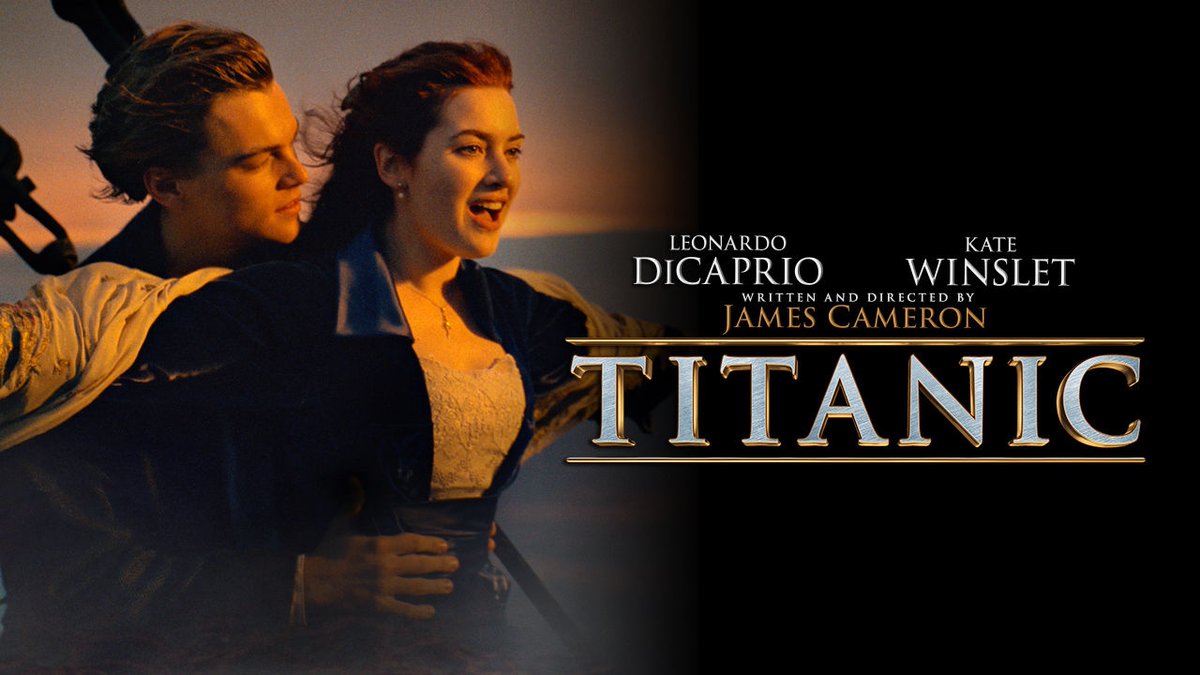
Box office: $2.19 billion
Director: James Cameron
Almost 20 years after its theatrical debut, James Cameron’s blockbuster epic is still so ubiquitous in the pop culture zeitgeist, its filmmaking marvels are drowned out by young Kate-and-Leo nostalgia and that damned Celine Dion caterwaul (not to mention the now late James Horner’s iconic score). Cameron’s ear for dialogue may be woefully leaden, but he’s a shrewd storyteller, plunking a Romeo-and-Juliet redux aboard the doomed ocean liner and flanking the fictional romance with historical details, groundbreaking special effects, and jaw-dropping visuals. The narrative lapses are at times dumbfounding-let’s face it, old Rose, who tosses a priceless artifact into the abyss after waxing ad nauseam about herself, is a thoughtless jerk—and the aforementioned dialogue is awful (to say nothing of Billy Zane doing his best mustache-twirling silent movie villain) but Titanic remains a painstaking testament to the all-in Hollywood spectacle.—Amanda Schurr
2. Avatar (2009)
Box office: $2.79 billion
Director: James Cameron
It makes sense that Avatar is the second highest-grossing movie ever made: Irony and insincerity have no place in its extended universe. Whether or not James Cameron intended to crib the world of Pandora and its futuristic inhabitants from practically every fantastical ur-text ever conceived, it hardly matters, because Avatar is modern mythmaking at its most foundational. Cameron still seems to believe that “the movies” can give audiences a transformative experience, so every sinew of his film bears the Herculean effort of truly genius worldbuilding, telling the simple story of Jake Sully (Sam Worthington) and his Dances with Wolves-like saving of the Na’vi, natives to the planet of Pandora, from the destructive forces of colonialism. Cameron wants us to care about this world as much as Jake Sully, and by extension, James Cameron, does, crafting flora and fauna with borderline sociopathic obsessiveness, at the time pushing 3-D technology to its brink to bring his inhuman imagination alive. It worked; “unobtanium” is actually a real thing. Four sequels feel like a disgusting gambit for a man whose ambition may have long ago outpaced his sense of storytelling, or sense of reason, or sense of what our oversaturated, over-franchised culture can even stomach anymore. But Cameron’s proven us wrong countless times before. —Dom Sinacola
1. Avengers: Endgame (2019)

Box office: $2.796 billion
Directors: Joe Russo, Anthony Russo
Where does one begin? When it comes to Avengers: Endgame, that question is not so much an expression of wanton enthusiasm as a practical challenge in evaluating the destination toward which Kevin Feige and company have been steering story and viewer alike for the past 11 years and 21 films. Though there have been plenty of three-hour-plus movies and even a few 20+ entry movie franchises, there’s really nothing to compare with what Disney and Marvel Studios have pulled off, either in terms of size, quality and consistency of cast (a moment of silence for Edward Norton and Terrence Howard), or in how narrow the chronological window, all things considered, those movies were produced. Though we’ve praised it often, casting remains the cornerstone of the MCU. Whether by pitch-perfect distillations of decades-old comic book characters (Captain American, Thor, Spider-Man) or charisma-fueled reinventions of same (Iron Man, Ant-Man, Star-Lord), the MCU’s batting average in terms of casting is not only practically obscene, it’s a crucial ingredient in ensuring the thematic and emotional payoff (and box office payday) of Endgame. Moviegoers have been living with these actors, as these characters, for over a decade. For many, this version of these characters is the only one they know. This is why the sudden acidification of so many heroes at the end of Infinity War hit even the most cynical comic book veterans right in the feels and left less hardened viewers confused and distraught. It’s also why, as Avengers: Endgame opens (after another swift kick to the stomach just in case we’ve forgotten the toll of that snap), the audience cares about not just what the surviving heroes are going to do, but how they are +doing in general. It gives the film an emotional resonance that’s unusual not only in pulpier genre offerings but in films in general. This connection makes the quiet moments as valuable to the viewer as the spectacle, and for all the fireworks in the third act, Avengers: Endgame is very much a film of quiet moments and small yet potent emotional payoffs. Comic book fans know the thrill of following all your favorite characters through a multi-issue storyline that culminates in a “universe at stake” ending. Now, thanks to 21 movies in 11 years and one massive, satisfying three-hour finale, moviegoers do, too. —Michael Burgin